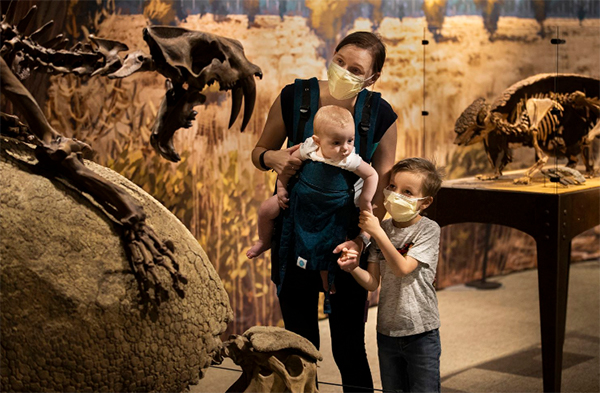Washington Post illustration/iStock.
Shannon McMahon, Museums are reopening to a new audience: Locals eager to ‘travel’, The Washington Post, 10 September 2020
The institutions are proving that cities aren’t “dead” by providing a window to travel during the pandemic.
As cooler weather approaches, many grounded travelers will not be able to escape to the outdoors as they did during the summer. Beyond staying at home amid the expected winter rise in covid-19 cases and braving the cold outdoors, however, there is a middle ground: the cavernous museum.
Museums now virtually guarantee visitors six feet of space for social distancing, thanks to new capacity limits and required time slots. What is a better window to far-off continents and subcultures than a gilded art gallery, a towering artifacts hall or even an ancient Egyptian temple plucked from a desert and re-erected indoors?
With their 2020 reopenings following months-long closures that began with the pandemic in March, the Carnegie Museums of Pittsburgh and the Metropolitan Museum of Art in New York recently bet that their patrons would agree. The former welcomed Pittsburghers back in June, and the latter has been brimming with visitors since its successful August reopening.

Officials for both institutions say their commitment to new health protocols make the massive halls perfect for a socially distant cultural experience and that their galleries are seeing more U.S.-based visitors than ever before.
“We were always confident we would reopen as soon as it was safe, because we have 2 million square feet of space and hundreds of galleries,” Met spokesperson Kenneth Weine told The Washington Post. The Met is using timed reservations to keep capacity below 25 percent, and it is welcoming an average of about 1,000 visitors per hour — mostly New Yorkers, rather than the international tourists the museum is used to.
To remain open, museums will rely heavily on local visitors. According to the American Alliance of Museums, museums support 726,000 jobs across the country and contribute $50 billion to the economy each year. Among the U.S. institutions planning to reopen, about 40 percent will do so with reduced staff, an AAM survey found.
“We all hope restrictions on travel will be lifted soon, but in the meantime, museums like ours offer safe and convenient access to objects and artifacts from around the world,” Carnegie Museums President Steven Knapp said via email, “as well as a safe and enjoyable refuge from inclement weather.”

The four Carnegie Museums as well as the recently reopened Met have implemented mandatory mask policies, enhanced cleanings and distancing guidelines. Another Carnegie Museums spokesperson told The Post that the institution is hopeful for an influx of visitors as the weather cools.
That massive museum halls like the Met’s are newly bustling with life serves as proof that cities are not “dead.” It would be easy to relegate cities to the list of things that covid-19 has killed, as one writer recently said about Manhattan, catching the wrath of many (including Jerry Seinfeld). But the successful 2020 reopenings prove that city museums provide visitors a front-row seat to the art and culture that travel often affords.

In normal, pre-pandemic years, long-haul travel has been embedded in both institutions’ daily efforts. For 46 years, the Carnegie Museums offered tailored travel programs that whisked participants off to Egypt, Venice, Morocco and more for curated behind-the-scenes tours of some of the world’s most famous museums and historical sites. The small-group tours were postponed this year to 2021, and replaced with on-site programming, including an Egyptologist-led tour of the Carnegie’s Egypt Hall.
For the Met, long-haul travel is typically responsible for most of their visitors, who come from abroad. But with international plane travel halted, Weine says, there’s a new focus on New Yorkers, which now make up over 90 percent of entrants. The museum recently launched a complimentary bike valet program to encourage the many locals now getting around on two wheels to stop by and experience the Met’s spaces, including the iconic Great Hall and the Sackler Wing’s Temple of Dendur, with far fewer crowds.
“New Yorkers have endured the unthinkable; a pandemic that continues, and so many challenges from it,” Weine says. “There’s absolutely nothing like the experience of providing people a place of solitude to enjoy the cultural treasures of over 5,000 years of human history. … This is why we live in New York, and other places like it.”

